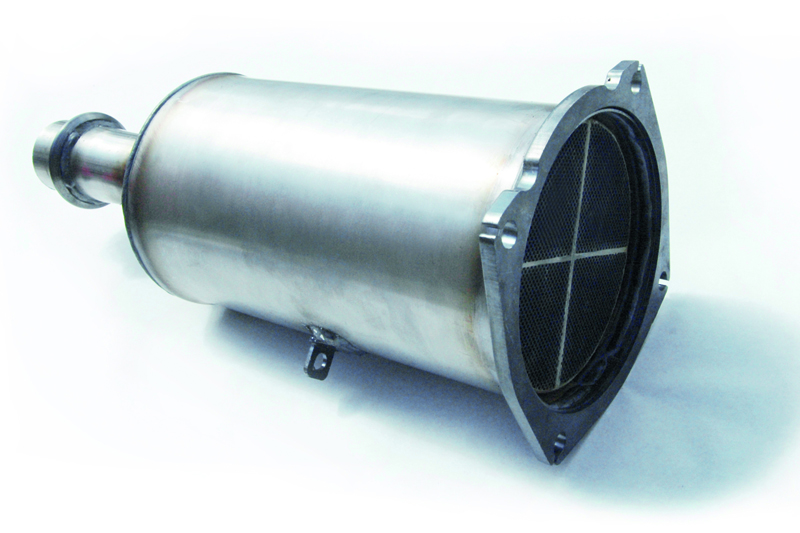
Mark Blinston, of BM Catalysts, advises mechanics about the key things to look out for when approaching Diesel Particulate Filter (DPF) maintenance.
The basics
A DPF is the part of the exhaust system that removes particulate matter (soot) from the exhaust gases. As of February 2014, any vehicle that was fitted with a DPF as standard, but has had it removed, will automatically fail its MOT, so it’s important to know how they work and how they can be maintained. A DPF works by channelling gases into a chamber that is then sealed, forcing the gases through the porous cell walls. As the particulate matter is too large to pass through the cell walls, it is trapped and removed from the exhaust, and subsequently burned off during regeneration.
Regeneration
There are three different types of regeneration: passive, active and forced. Passive regeneration occurs during normal driving conditions, when the DPF becomes hot enough to burn off some of the trapped particulates naturally, between 350 and 500 ̊C. Active regeneration is an ECU-led process that increases the exhaust temperature by a post injection of fuel into the cycle. This raises the temperature of the DPF to burn off all the trapped particulates. Forced regeneration is carried out by garages with diagnostic equipment.
“We’re expecting most, if not all, cars with an SCR component to come with an additional inlet under the fuel cap cover, and for garages to add Adblue to their options at the pump.”
Technological differences
Whilst all DPFs work in the same way, vehicle manufacturers use slightly different variations of the technology:
Coated DPFs – favoured by German manufacturers, these use a precious metal coating on the DPF to aid the regeneration process. The coated DPF catalyses as well as filters, so the vehicle does not necessarily need a separate Cat. The coating of precious metals lowers the temperature at which regeneration takes place, to 400 ̊C.
Fuel Additive Systems – favoured by French manufacturers, these are used in conjunction with a diesel Cat. This type of DPF uses a fuel additive to aid the regeneration process. The additive lowers the temperature at which regeneration takes place, to 400 ̊C.
In terms of care, mechanics should use the correct oil as per the manufacturer’s specifications – never use exhaust paste or undue force when fitting a new DPF. New fittings and sensors should always be used, where possible. The manufacturer’s guidelines should always be followed when resetting the ECU.
Selective Catalytic Reduction (SCR)
As catalytic converters use the chemical reaction between precious metals, and DPFs use the physical barrier of porous cell walls, SCRs use ammonia with a loaded catalyst to achieve the required reaction and filtration. The ammonia in these systems comes in the form of urea or Adblue, a water-based variant used due to the dangers of transporting ammonia in other forms. Adblue will have to be regularly replenished and failure to top up the reservoir will lead to automatic engine shutdown. Therefore, we’re expecting most, if not all, cars with an SCR component to come with an additional inlet under the fuel cap cover, and for garages to add Adblue to their options at the pump.
Some ingenious tinkering and clever design has meant that larger passenger cars (which, let’s face it, are the ones that need the technology the most) can now be fitted with an effective SCR system that will reduce emissions without lowering the miles per gallon. The bad news for mechanics is that there will now be yet another part in the already cramped zone between engine and exhaust outlet. That means there could be, and are, systems that start with a catalytic converter, go through a diesel particulate filter (DPF) and then move to an SCR part before ultimately ending at a silencer. All very complicated, but with the positive note that there is one more relatively expensive, particularly sensitive part at the mercy of the engine’s ability to work perfectly.
Taking care of an SCR involves ensuring that the fluid levels are replenished. The amount of fluid used depends on the vehicle and how it is operated – but generally, replenishment frequency is likely to be similar to that of an oil change. Without the presence of AdBlue, the vehicle simply will not operate.









